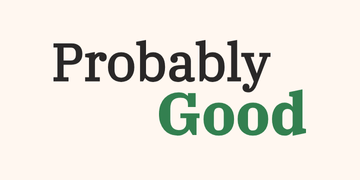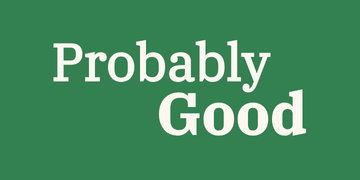How do you know if a job makes a difference?
When looking for a job that “makes an impact,” you may run into quite a few positions that sound good but don’t make much of a difference in practice.
For instance, you might find a job that tackles a big global problem like climate change (great!) but because the organization uses funds inefficiently and the role involves a lot of meaningless busy work, you end up not doing much good. Or maybe a start up claims it will make a positive impact on the world, but it turns out that the real goal is to increase profits.
With all the buzzwords and jargon in job descriptions, how can you gauge whether a role genuinely contributes to meaningful change?
The SELF Framework is a straightforward tool to help assess a role’s potential for making a real difference. Here’s a summary of the four key factors to consider:
S – Significance of the problem
There’s no shortage of problems in the world. But, with limited time and resources, you can often make a much bigger impact on the world by focusing on the most significant problems.
There are a lot of ways to think about a problem’s scope and scale. You could think of a problem’s significance as the extent to which it causes unhappiness, suffering, or a lower quality of life. It could also incorporate the extent to which the problem goes against your values—for example, a problem that causes harm to the environment or that perpetuates social inequalities.
Some questions to help you gain a better sense include:
- In the best-case scenario, how much would solving this problem improve the world? Would it save several lives? Reduce suffering? Protect people from harm?
- Who would be helped by solving this problem? How many people/animals are affected by it?
- Could solving one problem help solve adjacent problems or lead to second order effects?
More on Problem Significance >
E – Efficacy of the method or intervention
Just as problems vary in significance, solutions vary in effectiveness. And no matter how significant a problem may be, an ineffective method will do little to solve it. But what makes a method (that is, the means you’ll use to tackle the problem) especially effective?
An effective method is both efficient and scalable, meaning it achieves more with fewer resources. However, efficiency alone doesn’t guarantee success. For example, sometimes a big policy change is the most efficient method for improving a problem. If a policy is passed, it can have an outsized impact. However, policy change involves a lot of moving parts. It’s not guaranteed that advocating for a change will actually lead to one. It’s important, then, to consider the likelihood of a method’s success in practice.
Here are just a few questions to help you think through a method’s efficacy:
- Are there studies, impact reports, or research articles available that prove this intervention works? What exactly do they prove and do they spell out explicit estimates for how well it works? What are the differences and similarities between the study and the method in practice?
- Are there other solutions to the same problem that use fewer resources (time, money, talent, etc.)? Do these alternatives provide a better or worse outcome?
- Have people been trying and failing at this approach for a long time? Are there examples of similar projects or approaches that have/haven’t worked before?
L – Leverage of your specific role within the problem
The significance of the problem and efficacy of the solution often have to do with the whole organization’s efforts. When considering jobs, you also need to think about the specific role you would take.
A role’s leverage can be thought of as the total influence a specific position has on the impact the organization or company is trying to make. Some roles are extremely critical to accomplishing an overall goal or solving a problem, while others may not actually contribute much in practice. It’s not always clear whether a role has leverage within an organization, and it often depends on the specific situation.
Some questions to help gain some intuition on a role’s leverage include:
- Would the organization still make progress without this role?
- Is this role central to what the organization does?
- How much will this role enable others to do important work?
- Does this role directly make an impact on the problem we’re solving? If not, how does it indirectly contribute to progress?
An important caveat to “leverage” is that it may not be a top consideration for those earlier on in their career. It’s true that many junior-level roles can still make a significant contribution to an organization. But if you ask yourself these questions and think, “Hmm my entry-level role may not have great leverage…” it could be more important to prioritize career capital (which we discuss in the next advice article, linked below!) at this stage.
F – Fit of your strengths & interests for the job
A final important factor that influences impact is the personal fit you have for the role. In other words, how likely are you to excel in and enjoy a particular role?
Personal fit is crucial–it’s the part of the SELF framework that caters to the fact that you’ll be taking this role, not someone else. Even if a role is within an impactful organization doing great work, you probably won’t be able to do a lot of good if the particular opportunity doesn’t suit your skills or preferences. For instance, a research role could look really promising on paper, but if you hate being stuck behind a computer all day, it’s unlikely you’ll be able to do your best work.
Three important factors for assessing your personal fit include:
- Motivation: What kind of problems are you especially excited to work on? Is it important to see the direct impact of your efforts? Do you prefer an independent and autonomous environment or a more collaborative and communicative one? Do you prefer to focus on theoretical and abstract questions or solve more practical problems?
- Needs & circumstances: Do you have a minimum salary requirement? Are there other people in your life you need to support? What standard of living do you need to do your job well? How do you feel about changing your life circumstances to pursue an impactful opportunity? Is there a certain work-life balance that you need? Do you need a part-time or flexible schedule to accommodate other life circumstances?
- Skill: Are you especially good at this type of work? Could you become good at it? What sort of tasks do you excel at? Do you bring useful and unique skills that most people in this role don’t have?
Your potential impact
The SELF framework isn’t a precise mathematical tool. Rather, it’s most helpful either as a heuristic to keep in mind during your career explorations, or as the basis for a rough calculation that can nudge you in the right direction. It can help you compare options more thoughtfully, highlight trade-offs, and see where a path that looks less “prestigious” or conventional might actually lead to deeper impact.
If you do use the framework, it may be worth thinking of it as a series of multipliers, assigning a value to its problem significance (for example, the number of lives lost each year to the problem) and giving the other elements a score between 0 and 1.
Your potential impact = Significance x Efficacy x Leverage x Fit
It’s worth noting that no single component of the framework is necessarily more important than the others, but the most promising roles will likely score highly on at least a few elements. If a role scores particularly low on a part of the framework, this can dramatically reduce how promising it looks. For instance, If a role has great fit, efficacy, and problem significance, but almost no leverage, it might not be a promising route to impact. Again, it’s not worth getting too bogged down in specific numbers, but giving even rough values can prove useful.
You can also explore

